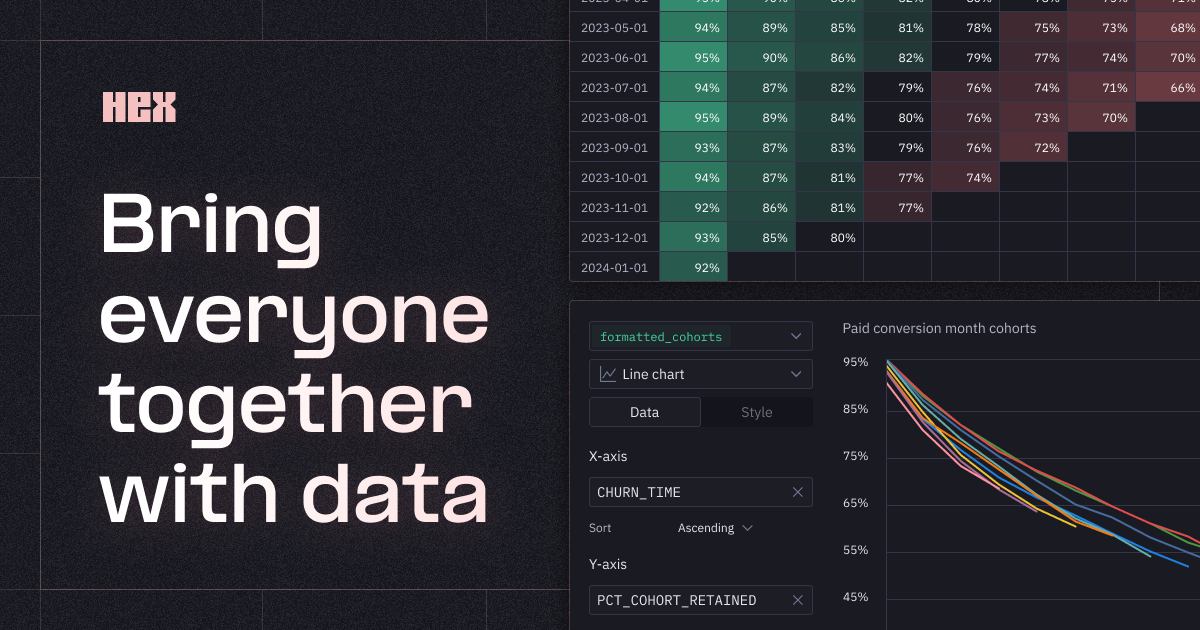Overview
Hex is a collaborative, AI-powered workspace designed to bring everyone together with data, enabling end-to-end processes from quick queries to deep-dive analyses and the creation of interactive data apps.
Key Features:
- Hex provides a modular, notebook-based canvas that integrates SQL, Python, R, pivots, spreadsheets, and charts for comprehensive data exploration.
- The platform includes built-in AI capabilities that allow users to generate queries, write code, create visualizations, fix bugs, and initiate analyses from a simple prompt.
- Hex offers a drag-and-drop UI builder for publishing work into beautiful reports, data apps, and dashboards, enhancing the interactivity and presentation of data insights.
Benefits:
- Hex empowers teams to collaborate effectively by allowing feedback from peers, alignment with stakeholders, and the use of reusable components, all within the same workspace.
- The platform supports rapid exploration and operationalized data science, enabling teams to make data-driven decisions quickly and efficiently.
- Hex's integration capabilities with popular data warehouses, lakehouses, and databases ensure seamless data connectivity and sharing across teams.
Use Cases:
- Hex is used for rapid data exploration and analysis, allowing companies like StubHub to realign their analytics stack for improved speed and quality.
- Organizations like ClickUp utilize Hex to transform data science projects into cross-functional programs that enhance customer retention and satisfaction.
- Hex serves as a central hub for insights, enabling teams at companies like Notion to make informed decisions across various departments, from data science to customer experience and sales.
Capabilities
- Generates SQL queries from natural language prompts
- Writes code in multiple languages, including Python
- Creates data visualizations and interactive dashboards
- Debugs code and fixes technical issues
- Automates complex and repetitive data workflows
- Connects directly to data warehouses and cloud storage solutions
- Performs ad hoc data exploration for swift insights
- Facilitates real-time collaboration on data projects
- Clusters events and maps complex datasets
- Investigates large-scale data and generates reports
- Classifies and organizes conversations by topic relevance
- Models and analyzes data efficiently using Python
- Streamlines multi-step analysis through chained workflow cells
- Integrates seamlessly with major data platforms and warehouses

Add your comments